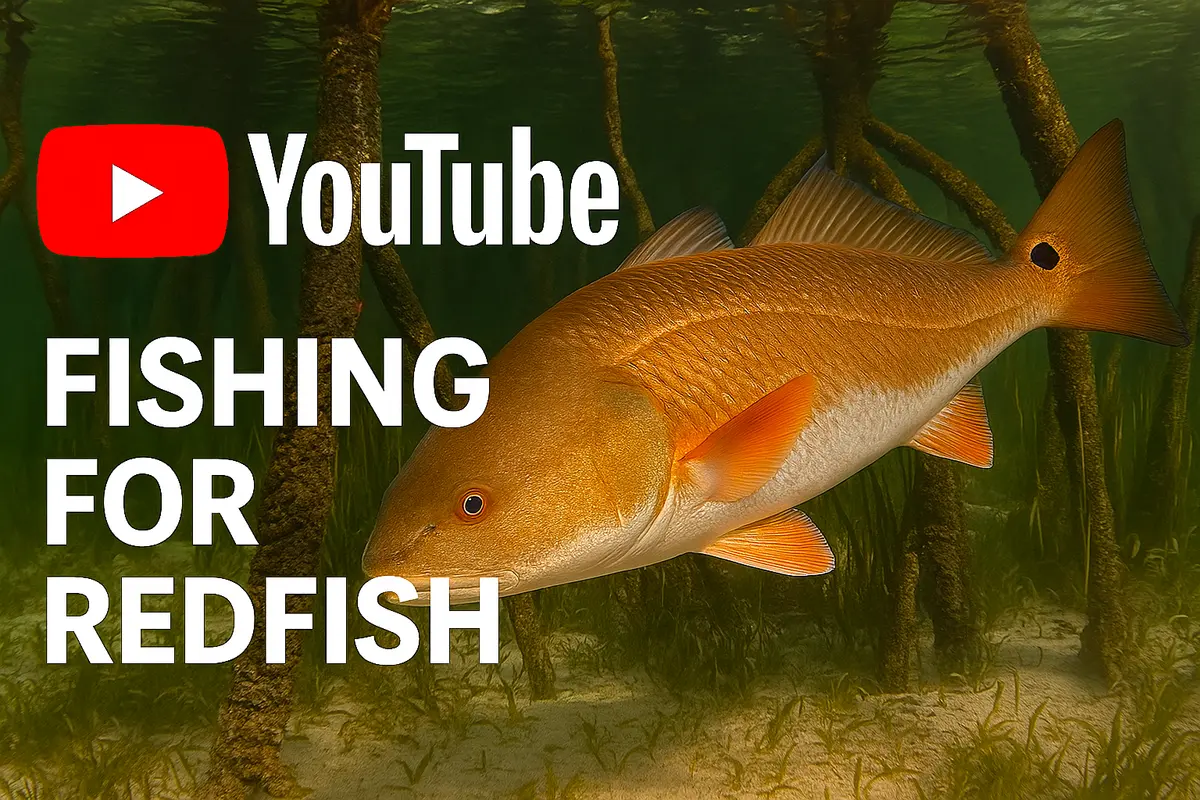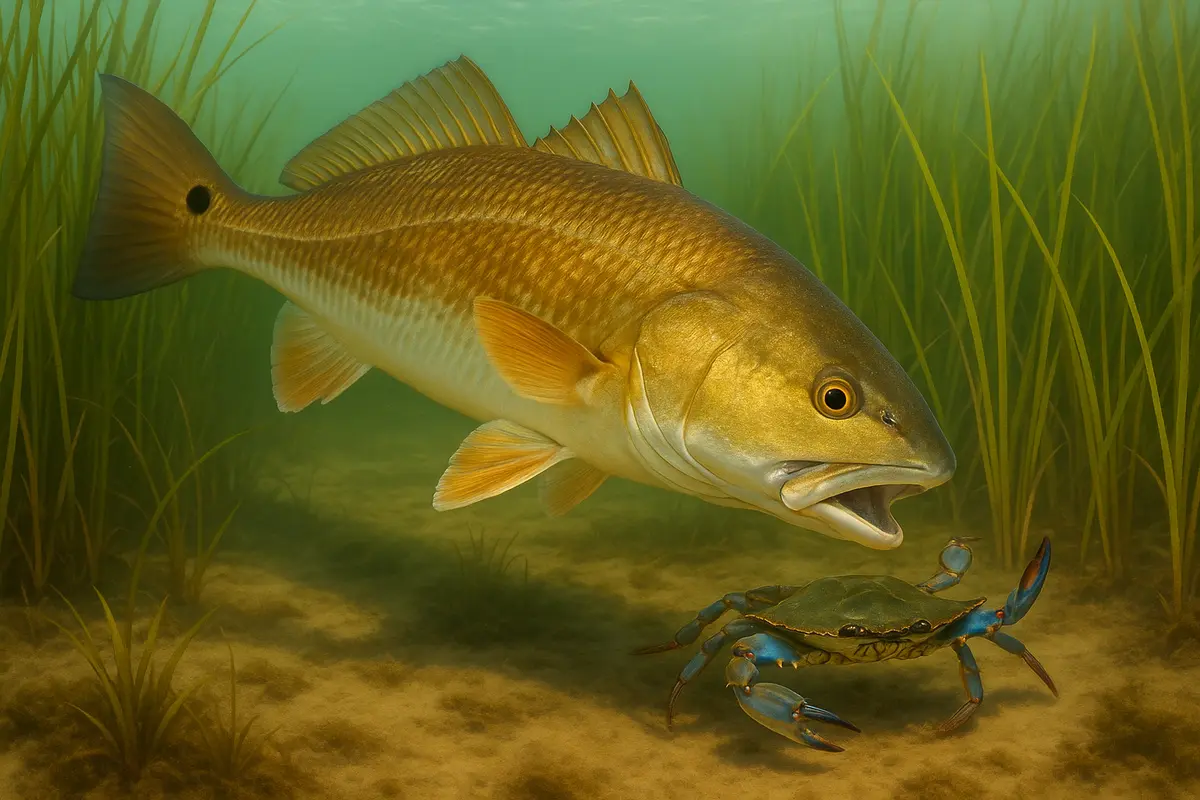Redfish: Habitats - Tidal Marshes
Table of Contents
- Redfish: Habitats – Tidal Marshes
- The Anatomy of a Tidal Marsh and Why They Hold Redfish
- 1. Creek Channels & Drainage Ditches
- 2. Grass Flats and Spartina Meadows
- 3. Potholes and Deeper Marsh Holes
- 4. Oyster Bars & Mud Ridges
- 5. Edge Lines and Shell Rims
- Redfish Positioning Relative to Tides
- Environmental Variables That Influence the Bite
- Water Temperature
- Water Clarity
- Seasonal Movements
- Wind & Weather
- 1. Galveston Bay Marshes – Texas
- 2. Venice Marshes – Louisiana
- 3. Charleston Lowcountry Tidal Marshes – South Carolina
- 🧰 Recommended Gear for Tidal Marsh Redfish
- Tackle Blueprint for Marsh Redfish
- Four Marsh Bait & Rig Strategies
- Presentation Techniques That Fool Marsh Reds
- Flood‑Tide Creep
- Drainway Ambush
- Pothole Drops
- Cover Skipping
- Community Wisdom & Expert Tips
- Fine‑Tuning by Season
- Spring: Grass-Bed Blitz
- Summer: Flat Pressure
- Fall: Tail Behind Schools
- Winter: Hold Deep
Redfish: Habitats – Tidal Marshes
Tidal marshes—those dynamic, grass‑lined wetlands that flood and ebb—are ideal habitats for redfish. The shifting water levels create feeding corridors rich in bait and structure, offering both cover and ambush lanes. Understanding how redfish utilize tidal marshes can greatly sharpen your approach.
The Anatomy of a Tidal Marsh and Why They Hold Redfish
1. Creek Channels & Drainage Ditches
Tidal marshes are threaded by creeks that fill and drain on tides. Redfish station near these creeks, particularly at mouths or pinch points, ready to ambush prey flushed by currents. These “choke points” concentrate bait and fish alike.
2. Grass Flats and Spartina Meadows
Shallow grass flats flooded during higher tides hold an abundance of shrimp, fiddler crabs, and baitfish. Reds move into these zones during flood tides to feed in waters just 1–1.5 ft deep .
3. Potholes and Deeper Marsh Holes
Subtle depressions or deep holes carved into the marsh floor serve as refuge during low water. These are staging grounds during changing tides, where redfish regroup and feed.
4. Oyster Bars & Mud Ridges
Mixed bottom areas—oyster shell, mud, and grass—create complexity, attracting redfish to forage on crustaceans and small fish. They transition between structure-rich zones and adjacent soft bottom.
5. Edge Lines and Shell Rims
On marsh edges, where vegetation meets open water and shell seams run parallel to shore, redfish lie just beyond the grass, moving in and out with tides.
Redfish Positioning Relative to Tides
| Tide Stage | Likely Redfish Spot | Why They Hold There |
|---|---|---|
| Flood tide | Creek mouths & flats (1–1.5 ft deep) | Incoming water pushes prey into flats; redfish follow the feast) |
| High slack | Shell seams, oyster bars, holes | Moderate depth and concentrated forage; redfish cruise edges |
| Ebb tide | Creek mouths & drainage ditches | Draining water funnels prey; redfish intercept them |
| Low slack | Deep potholes & creek channels | Fish rest in deeper water before tides reverse |
Reading a Marsh: Scan for slurps, swirls, or piggybacks—small wakes near grass or creek edges signal feeding. On clear days, sight-fishing is achievable; in stained water rely more on sound and movement.
Environmental Variables That Influence the Bite
Water Temperature
Redfish feed actively in marshes when temperatures range from 68–84 °F. In colder weather they linger in deeper channels; on hot days shade in creek channels holds them .
Water Clarity
After rain, marsh water becomes stained—excellent conditions for aggressive feeding. In clear water, lighter leaders and stealth are key .
Seasonal Movements
- Spring: Reds move shallow, feeding on crabs and shrimp in flooded marshes.
- Summer: Focus on dawn/dusk flood tides; schoolers in flats.
- Fall: Major feeding in shallow water ahead of winter chill.
- Winter: Fish deep holes and creek mouths with slow presentations.
Wind & Weather
Windier days push bait into edges—reds follow. Gray skies encourage redfish to venture into open water where light is dim .
1. Galveston Bay Marshes – Texas
- Location: Galveston Bay System, including West Bay’s back-lake marshes and Bolivar Peninsula flats
- Habitat: Shallow Spartina grass flats, creek mouths, oyster shell ridges, and deeper potholes
- Best Season: Spring (March–May) and Fall (September–November)
- Techniques:
- Sight-casting soft plastics (paddletails, jerkbaits) along grass edges on flood tide
- Free-lining live shrimp under a popping cork in creek mouths during ebb tide
- Kayak or push-pole stealth approaches to pinpoint tailing fish in 1–2 ft of water
- Notable Features:
- Extremely clear back-lakes allow visual hookups even in stained water
- Extensive shoreline gives anglers a variety of tidal stages and structure to work
- Steep tidal range (over 2 ft) produces strong flows that funnel bait into grass seams
2. Venice Marshes – Louisiana
- Location: Venice, Plaquemines Parish—“Birdman’s Capital of the World” marsh network
- Habitat: Brackish marsh ponds, reed-lined cut banks, tidal canals, and spoil bank oyster reefs
- Best Season: Late summer through fall (August–October)
- Techniques:
- Casting Redfish Magic spinnerbaits and paddle tails into shallow ponds on rising tides
- Sight-casting soft plastics (shrimp and crab imitations) to individual tails in 1–3 ft of water
- Switching to 3/8-oz jigs with paddle tails for deeper or wind-blown conditions
- Notable Features:
- Some of the largest bull reds in the Gulf congregate here, often schooling in shallow pockets
- Strong freshwater pulses from the Mississippi River can color water and concentrate bait
- Boat access via the Mississippi River Ship Channel allows deep-draft skiffs to reach remote ponds
3. Charleston Lowcountry Tidal Marshes – South Carolina
- Location: Charleston Harbor creeks (Wando, Cooper, Ashley Rivers) and surrounding Spartina flats
- Habitat: Interconnected tidal creeks, oyster rake edges, grass flats, and tidal ponds
- Best Season: Spring through early summer (April–June)
- Techniques:
- Fishing crab and shrimp patterns under a popping cork along grass seams
- Spinning soft plastics rigged weedless on EWG hooks, skipped under docks and oyster bars
- Push-pole sight-fishing during flood tide to target tailing fish in knee-deep water
- Notable Features:
- Beautiful Lowcountry scenery with easy launch points and boat ramps
- Calm, protected marshes ideal for light-tackle and fly anglers of all skill levels
- Network of oyster reefs and shell ridges concentrate bait and hold fish at all tide stages
🧰 Recommended Gear for Tidal Marsh Redfish
- Rod & Reel: 7′ medium-fast spinning rod paired with 3000–4000 reel
- Line Setup: 15–20 lb braid with 20–30 lb fluorocarbon leader
- Lures & Baits: weedless soft plastics, paddletails, scented spoons, live shrimp, cut mullet
- Terminal Tackle: worm‑style hooks for plastics, 1/8–½ oz jigheads, popping corks for cover presentations
Tackle Blueprint for Marsh Redfish
| Component | Specification | Purpose |
|---|---|---|
| Rod | 7′ medium-fast graphite spinning rod | Good balance for casting and hook-setting |
| Reel | 3000–4000 size with smooth drag | For dealing with surface reds and explosive runs |
| Leader | 20–30 lb fluorocarbon | Abrasion resistance on oyster shell and grass |
| Hooks | 2/0–4/0 weedless or EWG hooks | Skip soft plastics under cover / through grass |
| Weights | ¼ oz–½ oz jigheads or light split‑shot | Match shallow water currents |
Four Marsh Bait & Rig Strategies
| Bait Type | Rig | Why It Works |
|---|---|---|
| Soft Plastics | Weedless jighead + paddletail | Skip over grass and flats into open water with minimal snag risk |
| Popping Cork | Cork + 3–4 ft leader + swimbait | Attract fish visually and audibly in stained or shallow water |
| Live Shrimp | Free-line under cork or jerk rig | Natural presentation—skip into creek mouths and potholes |
| Cut Mullet | Scented tube/trailer hook with split-shot | Strong scent draws reds into edge channels during ebb |
Presentation Techniques That Fool Marsh Reds
Flood‑Tide Creep
Sneak along creek edges or shell seams, casting beyond the fish, then retrieve with subtle twitches as bait drifts into hiding spots.
Drainway Ambush
Cast into drainage ditches during ebb; let lure slowly drift through - ripples, slurps, and closures matter here.
Pothole Drops
Drop soft plastics past holes near grass edges—pause and jig to mimic trapped prey.
Cover Skipping
Skip plastics under overhanging marsh grass or dock pilings—reds often lie just inside these shaded ambush points.
Community Wisdom & Expert Tips
- Flood‑tide is gold: consistent booming bite times in marshes
- Wind helps: wind‑raked bait into grass edges equals red hotspots
- Stealth matters: boat push‑poling or wading beats motor noise
- Sight or sound?: in stained water, listen for slurps; in clear water, use polarized glass and patience
Fine‑Tuning by Season
Spring: Grass-Bed Blitz
Flooded grass edges hold shrimp & crab—twitch plastics or jerkbait on rising tides.
Summer: Flat Pressure
Early morning & late evening on creek edges—topwaters, spoons, plastics skip through warm flats.
Fall: Tail Behind Schools
Redfish roam shallow flats in schools—look for tails/wakes and present cut bait or lure ahead of the school.
Winter: Hold Deep
Target deep holes & creek channels—slow drops with shrimp, mullet, or plastics work best.
Click to learn detailed marsh‑creek redfish tactics.
| Popular YouTube Searches | Watch |
|---|---|
| Tidal marsh redfish tips |  |
| Sight fishing marsh creeks |  |
| Best flood tide baits for marsh reds |  |
| Walking marsh grass for reds |  |
Ask AI for More Info
Try our AI assistant for free—sign up to access this powerful feature.
👉 Sign Up to Ask AI